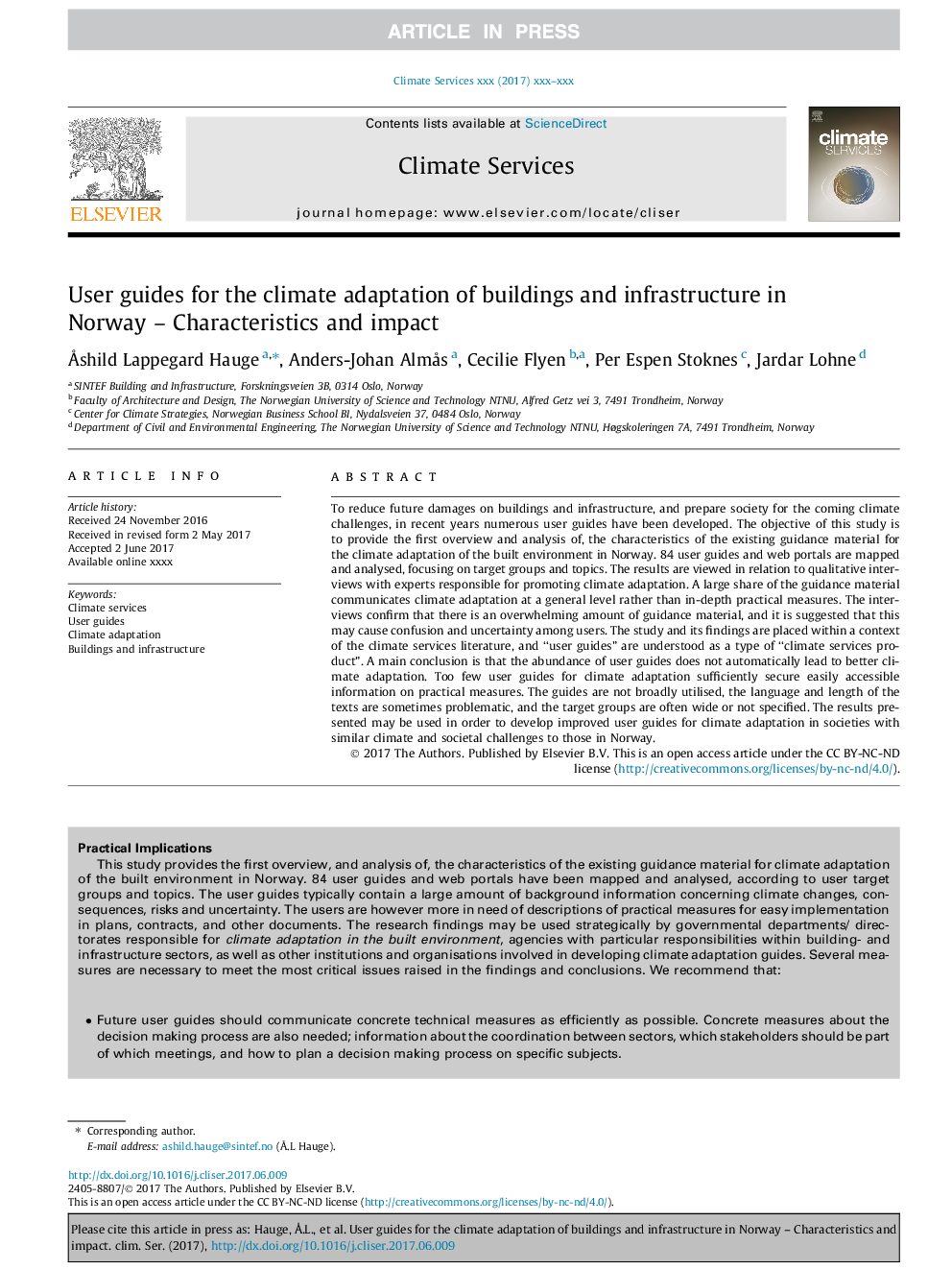| Article ID | Journal | Published Year | Pages | File Type |
|---|---|---|---|---|
| 5755112 | Climate Services | 2017 | 11 Pages |
Abstract
To reduce future damages on buildings and infrastructure, and prepare society for the coming climate challenges, in recent years numerous user guides have been developed. The objective of this study is to provide the first overview and analysis of, the characteristics of the existing guidance material for the climate adaptation of the built environment in Norway. 84 user guides and web portals are mapped and analysed, focusing on target groups and topics. The results are viewed in relation to qualitative interviews with experts responsible for promoting climate adaptation. A large share of the guidance material communicates climate adaptation at a general level rather than in-depth practical measures. The interviews confirm that there is an overwhelming amount of guidance material, and it is suggested that this may cause confusion and uncertainty among users. The study and its findings are placed within a context of the climate services literature, and “user guides” are understood as a type of “climate services product”. A main conclusion is that the abundance of user guides does not automatically lead to better climate adaptation. Too few user guides for climate adaptation sufficiently secure easily accessible information on practical measures. The guides are not broadly utilised, the language and length of the texts are sometimes problematic, and the target groups are often wide or not specified. The results presented may be used in order to develop improved user guides for climate adaptation in societies with similar climate and societal challenges to those in Norway.
Keywords
Related Topics
Physical Sciences and Engineering
Earth and Planetary Sciences
Atmospheric Science
Authors
Ã
shild Lappegard Hauge, Anders-Johan Almås, Cecilie Flyen, Per Espen Stoknes, Jardar Lohne,
